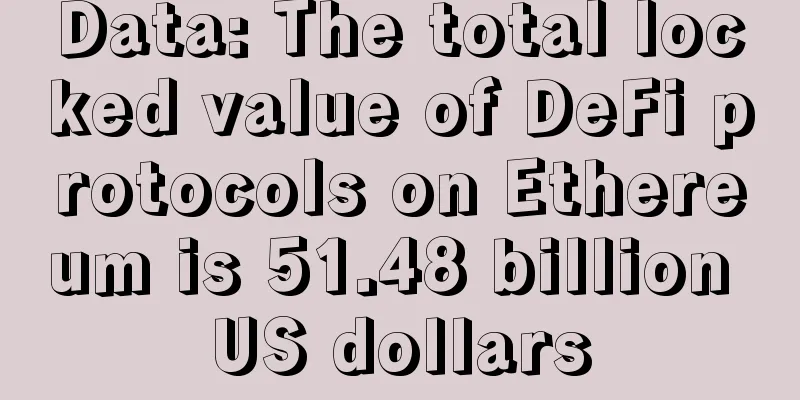Blockchain infrastructure and its applications in the insurance industry

|
Blockchain technology originated from the Bitcoin community. It is not only valued by financial institutions, but also gradually concerned by major economies and important international organizations in the world. After experiencing the blockchain 1.0 era represented by Bitcoin applications, it has now entered the blockchain 2.0 era marked by smart contracts. This article attempts to analyze the common architecture of blockchain and proposes some possible application scenarios in the insurance industry based on its technical characteristics. 1. Classification and characteristics of blockchain 2.0Typical representatives of blockchain 2.0 are Ethereum and Hyperledger, which respectively represent two important development directions of blockchain: public chains for the public and consortium chains for enterprises. 1. Public chain, consortium chain and private chain Public chains are blockchains that are open to everyone and anyone can participate in; consortium chains are controlled by a consortium of multiple organizations, and entry and exit require authorization; private chains are blockchains that are completely controlled by a single individual or organization. Public chains are not suitable for most enterprise application scenarios. In the future, the focus of enterprise applications will be on consortium chains, but at this stage, the focus is on public chains. Public chains are the test fields of blockchain technology, and they will encounter various complex situations and problems. They are tests of new technologies and new businesses, which provides a good reference for enterprise applications. The three characteristics of blockchain, decentralization, security, and efficiency, conform to the Mundell impossible triangle relationship, that is, it is impossible to meet all three conditions at the same time. The public chain achieves complete decentralization and security, so its performance is very low. In order to improve performance and security for enterprise applications, the alliance chain has to compromise on decentralization and manage nodes through a centralized authorization method, achieving semi-centralization. 2. Advantages of Blockchain 2.0 Blockchain 1.0 is called the "global ledger". Accordingly, blockchain 2.0 can be regarded as a "global computer": it realizes the Turing completeness of the blockchain system, can upload and execute applications on the blockchain, and the effective execution of the program can be guaranteed. On this basis, the function of smart contracts is realized. Compared with blockchain 1.0, blockchain 2.0 has the following advantages: 1. Support smart contracts Blockchain 2.0 is positioned as an application platform, on which various smart contracts can be released and data can be interacted and processed with other external IT systems, thereby realizing various industry applications. 2. Transaction speed that adapts to most application scenarios By adopting new consensus algorithms such as PBFT, POS, and DPOS, the transaction speed of Blockchain 2.0 has been greatly improved. The peak speed has exceeded 3000TPS (transactions processed per second), which is much higher than Bitcoin's 5TPS and can meet most financial application scenarios. 3. Support information encryption Because Blockchain 2.0 supports complete program operation, it can customize the encryption and decryption of sent and received information through smart contracts, thereby protecting the privacy of enterprises and users. At the same time, the application of advanced cryptographic technologies such as zero-knowledge proof has further promoted the development of its privacy. 4. No resource consumption In order to maintain network consensus, Bitcoin uses a computing power of over 122,029 TH/s, which is equivalent to the computing speed of 5,000 Tianhe-2A units, and consumes more than 2,000MWh of electricity per day, which is about hundreds of thousands of RMB (estimated data). Blockchain 2.0 uses new consensus algorithms such as PBFT, DPOS, and POS. It no longer needs to consume computing power to reach consensus, thus achieving zero consumption of resources, allowing it to be deployed in the enterprise information center in a green and safe manner. 2. Technical ArchitectureBlockchain 2.0 adopts a five-layer architecture, which includes data layer, network layer, consensus layer, incentive layer, and smart contract layer from bottom to top, as shown in Figure 1. Figure 1 Five-layer architecture 1. Data layer The bottom layer of the data layer is the foundation of everything. It mainly implements two functions: one is the storage of relevant data, and the other is the implementation and security of accounts and transactions. Data storage is mainly based on Merkle trees, implemented in blocks and chain structures, and mostly implemented in the form of KV databases for persistence, such as Ethereum's leveldb. Accounts and transactions are implemented based on a variety of cryptographic algorithms and technologies such as digital signatures, hash functions, and asymmetric encryption technologies, ensuring that transactions can be carried out safely in a decentralized environment. 2. Network layer The network layer mainly realizes the connection and communication of network nodes, also known as peer-to-peer technology. It is an Internet system without a central server and relies on user groups to exchange information. Unlike the central network system with a central server, each user end of the peer-to-peer network is both a node and a server, and it has the characteristics of decentralization and robustness. 3. Consensus layer The consensus layer is mainly used to achieve consensus on transactions and data among all nodes in the entire network, and to prevent consensus attacks such as Byzantine attacks, Sybil attacks, and 51% attacks. Its algorithm is called a consensus mechanism. Due to its different application scenarios, blockchain 2.0 has developed a variety of distinctive consensus mechanisms. PoS: Proof of Stake Principle: The probability of a node obtaining a block reward is proportional to the number of tokens held by the node and the time. After obtaining the block reward, the node's token holding time is reset and recalculated. However, due to the high human factor in the initial distribution of tokens, it is easy to cause a large gap between the rich and the poor in the later stage. DPoS: Delegate Proof of Stake, share authorization proof Principle: All nodes vote to select 100 (or other number) delegate nodes. Blocks are completely generated by these 100 delegate nodes according to a certain algorithm, similar to the parliamentary system in the United States. Casper: Betting on Consensus Principle: Ethereum's next-generation consensus mechanism requires each node participating in the consensus to pay a certain deposit. The probability of a node obtaining a reward is proportional to the deposit. If a node acts maliciously, the deposit will be deducted. PBFT: Practical Byzantine Fault Tolerance, Byzantine Fault Tolerance Algorithm Principle: Unlike the consensus mechanism of general public chains, which is mainly based on the principle of economic game, PBFT is based on a state machine replica replication protocol in an asynchronous network environment. In essence, it achieves consensus through mathematical algorithms. Therefore, the confirmation of blocks does not need to be safe after several blocks like in public chains. It can achieve confirmation as soon as a block is produced. PoET: Proof of Elapsed Time Principle: This consensus mechanism was proposed by Intel. The core is to use Intel's CPU hardware that supports SGX technology to randomly generate some delays in a controlled security environment (TEE). At the same time, the CPU proves the credibility of the delay from the hardware level, which is similar to the lottery algorithm. Whoever has the lowest delay will obtain the right to keep accounts. In this way, the only way to increase the right to keep accounts is to increase the number of CPUs, which has the possibility of one CPU one vote as envisioned by Satoshi Nakamoto. At the same time, the additional CPUs will increase the resources of the entire system, which in disguise realizes the positive proportional relationship between the right to keep accounts and the resources provided. Consensus mechanisms have their own advantages and disadvantages, and are suitable for different scenarios. For comparison, the following table is formed:
Table 1 Comparison of different consensus algorithms 4. Incentive layer The incentive layer mainly implements the issuance and distribution mechanism of blockchain tokens. For example, Ethereum uses Ether as the fuel for the operation of the platform, which can be obtained through mining. A fixed reward of 5 Ether is given for each block mined. At the same time, running smart contracts and sending transactions require paying a certain amount of Ether to miners. 5. Smart Contract Layer Smart contracts give the ledger programmable features. Blockchain 2.0 implements the functions of smart contracts by running codes through virtual machines, such as Ethereum's Ethereum Virtual Machine (EVM). At the same time, this layer forms decentralized applications (DAPP) by adding a front-end interface that can interact with users to the smart contract. Of course, some technical documents believe that DAPP should be a separate application layer above the smart contract layer, which is reasonable as long as it does not affect the reader's understanding. 3. Smart Contracts(I) Introduction to Smart Contracts Smart contracts, also known as intelligent contracts, are event-driven, stateful, multi-party recognized programs that run on blockchain and can automatically process assets according to preset conditions. The biggest advantage of smart contracts is that they use program algorithms to replace human arbitration and contract execution. In essence, a smart contract is also a program, but unlike traditional IT systems, a smart contract inherits the three characteristics of blockchain: data transparency, immutability, and permanent operation. A. Data transparency All data on the blockchain is open and transparent, so the data processing of smart contracts is also open and transparent, and any party can view its code and data during operation. B. Cannot be tampered with All data on the blockchain itself cannot be tampered with, so the smart contract code deployed on the blockchain and the data output generated by its operation are also cannot be tampered with. Nodes running smart contracts do not have to worry about other nodes maliciously modifying the code and data. C. Permanent operation The nodes supporting the blockchain network often reach hundreds or even thousands. The failure of some nodes will not lead to the suspension of smart contracts. Its reliability is theoretically close to permanent operation, which ensures that smart contracts can be valid at all times like paper contracts. (II) Smart Contract Operation Principle This article briefly describes the operating principles of smart contracts using the most typical Ethereum as an example. Ethereum Virtual Machine (EVM) Ethereum Virtual Machine (EVM) is the operating environment of smart contracts in Ethereum. If we use an analogy, smart contracts are more like JAVA programs. JAVA programs interpret the code into bytes for execution through the JAVA Virtual Machine (JVM). Ethereum smart contracts are interpreted into bytecodes for execution through the Ethereum Virtual Machine (EVM). EVM is encapsulated in a sandbox, which means that the code running inside the EVM cannot access the network, file system or other processes, and even there are only limited calls between smart contracts. RPC Interface The RPC interface is the interface for Ethereum to interact with other IT systems. The Ethereum node provides a JSON RPC API interface on port 8545. The data transmission adopts the JSON format. It can execute various commands of the Web3 library and provide blockchain information to the front-end, such as Mist and other graphical clients. Smart contracts are codes deployed on the blockchain. The blockchain itself cannot execute codes. The execution of codes is implemented locally on each node through the Ethereum Virtual Machine (EVM). The operating principle of smart contracts is shown in Figure 1. Figure 2 Ethereum smart contract operation principle diagram As can be seen from Figure 2, the smart contract deployed on the blockchain is a data string that can generate the original smart contract code locally. The blockchain can be understood as a database. First, the client initiates a transaction to tell the Ethereum node the function and related parameters that need to be called. Then all Ethereum nodes will receive the transaction, read the stored smart contract execution code from the blockchain database, and run the result in the local EVM. Finally, in order to prevent the node from doing evil, the result of the node running the smart contract will be compared with other Ethereum nodes. After confirmation, the result will be written into the blockchain, thereby realizing the correct execution of the smart contract. 4. Prospects for blockchain application in insurance industryIn general, blockchain is a technology that can create credit. It enables nodes that have no relationship to trust each other and reach a consensus without the need for any authority to endorse it as an intermediary. It handles various transactions through smart contracts, reducing the risk of human intervention. This new technical feature can be applied to many financial fields, such as: A. Cross-border payment and settlement: realize point-to-point transactions and reduce intermediary costs B. Securities issuance and trading: realize quasi-real-time asset transfer and accelerate transaction settlement C. Customer credit investigation and anti-fraud: reduce legal compliance costs and prevent financial crimes This article attempts to propose some possible application scenarios in the insurance industry for discussion. 1. Mutual Insurance Mutual insurance, also known as mutual insurance, refers to a form of insurance formed by people with the same risk protection needs, not for profit, but based on the principle of mutual assistance, and implementing the "shared benefits, shared risks" form of insurance. The biggest difference between mutual insurance and commercial insurance is that the underwriter of commercial insurance is the company, whose interests are opposed to those of the customer, while the underwriter of mutual insurance is each participant, realizing the unity of the identity of the insurer and the insured. Mutual insurance has a long history. Judging from the practice of mutual insurance around the world, most of them are based on the original intention of mutual assistance, but due to the lack of an operational trust system, they fell into the corporate trap, causing mutual insurance organizations to become more and more like an insurance company, and many of them even eventually turned into companies. Blockchain technology constitutes an information-symmetrical, transparent, and tamper-proof trust network, which enables peer-to-peer blockchain mutual insurance to establish information security and a system of mutual trust between participants, and realize democratic decision-making and accurate execution of organizational rules through smart contracts, ultimately achieving a flat organizational structure, reducing operating costs, reducing mutual aid protection costs, and truly forming an insurance mutual aid form where everyone is for me and I am for everyone. In the application of mutual insurance, special attention should be paid to compliance issues. In order to protect the rights and interests of participants and prevent the recurrence of chaos in the P2P industry, the China Insurance Regulatory Commission issued the "Interim Measures for the Supervision of Mutual Insurance Organizations" in January 2015, which clearly stipulates that mutual insurance organizations must be approved by the China Insurance Regulatory Commission and be subject to its supervision. As of the date of publication, only three organizations have been approved nationwide. (II) Points Redemption Points are essentially a kind of digital asset, which is issued with the merchant's own services or products as the value endorsement. Insurance companies have always had problems with points being difficult to redeem and low customer activity. With the help of blockchain technology, several companies in different industries form an alliance chain, complete the issuance of points on the chain, and then the points can be freely circulated on the chain, realizing the transformation of point circulation from single-center control to socialized dissemination. Any channel with resources can become a catalyst for asset circulation, greatly improving circulation efficiency. Customers can get a better consumer experience, and insurance companies can effectively increase customer stickiness and expand customer acquisition channels. Figure 3 A possible blockchain points exchange architecture (III) Payment network among subsidiaries within the group In recent years, the trend of financial enterprise groupization has become increasingly obvious. The groupization of insurance enterprises is not only conducive to the centralized and unified management of various funds, the realization of professional investment management, and the achievement of investment scale benefits, but also conducive to enhancing the risk resistance of professional subsidiaries and improving the advantages of scale competition. Using the blockchain point-to-point payment technology shown in Figure 3 as the payment network between various subsidiaries, on the one hand, eliminating the bank as an intermediary, can improve the efficiency of capital flow within the group, realize the rapid payment and settlement between business departments and sales personnel across subsidiaries, ensure the authenticity and legality of business behavior, and strengthen information symmetry and transaction security; on the other hand, the group headquarters and management agencies at all levels are real-time verification and monitoring nodes in the network. As a part of the business process, they directly contact business data without causing any interference to the business process, realizing effective tracking, monitoring and early warning of the business, and promoting the transformation of corporate governance from institutional management to technical management.
Figure 4 Blockchain peer-to-peer payment method References [1] Ethereum: "Ethereum Homestead Documentation", http://www.ethdocs.org/en/latest/introduction/index.html [2] Yuan Yong, Wang Feiyue: “Current Status and Prospects of Blockchain Technology Development”, Acta Automatica Sinica, 2016 (4) |
Recommend
How does a woman with straight eyebrows look like?
Straight eyebrows are one of the many eyebrow sha...
Bitcoin once reached $35,000, and Dogecoin rebounded by more than 15%
Over the past 24 hours, bearish sentiment has beg...
What are the characteristics of a smooth person?
Facial features determine most of our fortune and...
How to tell your IQ and lifespan from your ear shape
In physiognomy, ears are responsible for a person...
The complexion of facial features
In physiognomy, by observing a person's facia...
Is it okay for a woman to have a mole on the right side of her chin?
Some women have a mole on their chin, and some sa...
How to analyze a man’s destiny from his palms?
Palmistry has been passed down from ancient times...
The most trustworthy man
The most trustworthy man 1. Ears The ears are the...
What kind of palmistry makes women prone to heartbreak
Love is a necessary part of life. It is not unfam...
A "Bitcoin" factory was suspected to be built in the underground garage of a community in Bengbu. Relevant departments intervened in the investigation
Da Wan News: Recently, many residents of Hengda Y...
People with which four facial features will have no worries about food and clothing
As the saying goes, food is the first necessity o...
The brilliance of the design of the Inchain system from the perspective of the consensus mechanism
Network consensus is an important part of the blo...
Major exchanges remove XRP, is it game over?
Author | Hashipi Analysis Team...
How is the career fortune of a young man with upturned nostrils?
Career luck is generally the most important fortu...
Men who are stingy and miserly have this kind of face, they are born misers
Men who are stingy and miserly have this kind of ...









